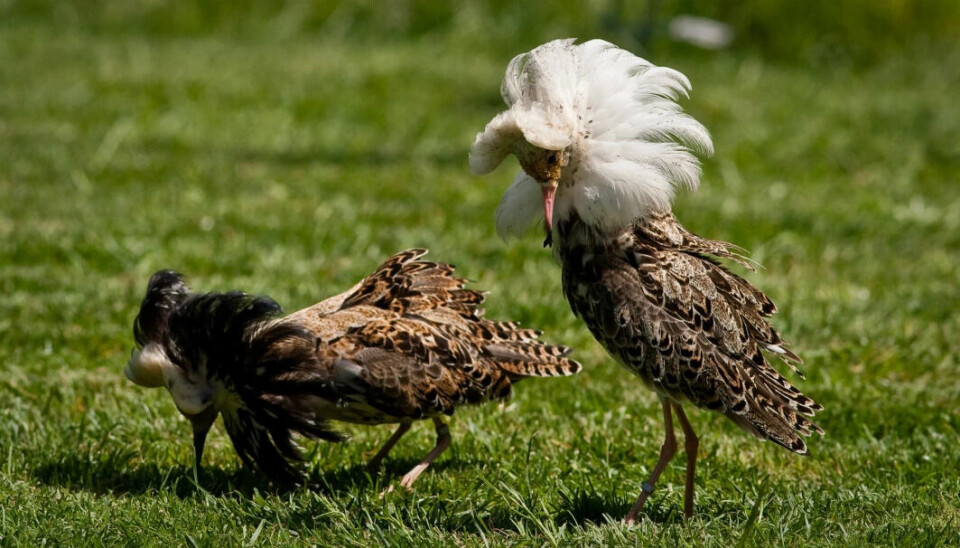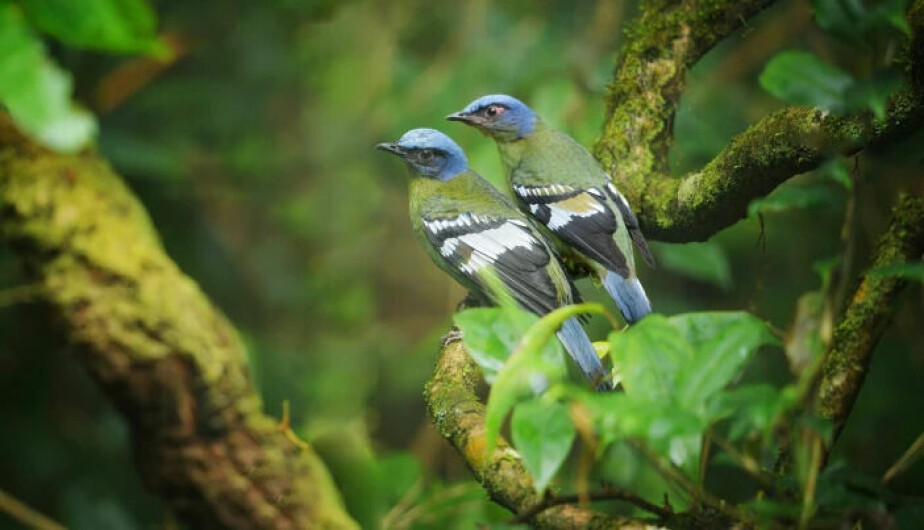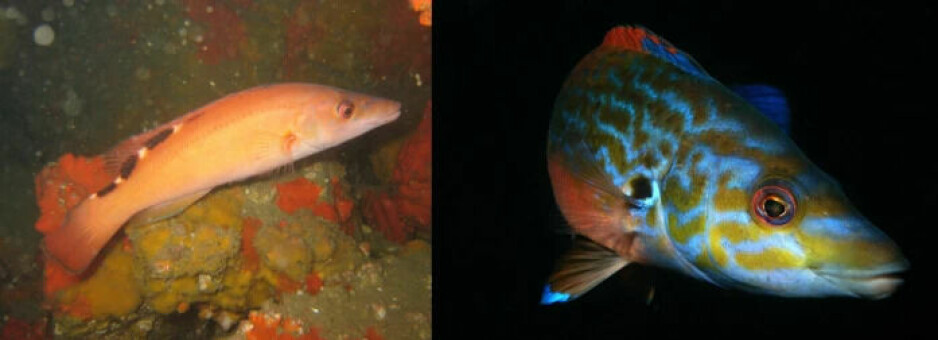
Biological sex: What kind of variations exist in nature?
In plants and animals, one type of gamete – reproductive cell – is larger than the other.
Not everyone feels that the biological sex they were assigned at birth mirrors who they really are.
Some identify as girls even though they were born as boys and vice versa. Others feel that they are in the middle or perhaps a little of both.
In a recent opinion piece in the newspaper VG (link in Norwegian), a parliamentary representative for the Centre Party, Jenny Klinge, criticised teaching children about gender in schools.
"There is no need to mess it up: We humans have two sexes, males and females, in the same way that chickens consist of roosters and hens," she wrote.
Doctor Kaveh Rashidi reacted to the piece on Twitter (link in Norwegian).
"Jenny Klinge from the Centre Party wants to look at the animal kingdom for answers about sex and gender. We can do that because in the animal kingdom it is common for individuals to change sex or be born without and develop it later in adulthood," Rashidi writes.
So how exactly does biological sex work in the animal kingdom, and how is it defined in nature? Two biologists answer.
“Variation”
It is true that chickens have two sexes and that there are also animals that change sexes or are both sexes.
“There are a bunch of animals that are both, such as earthworms and snails. Then there are a good number of animals that change sex depending on external factors,” says Petter Bøckman, zoologist at the Natural History Museum in Oslo.
There is variation in nature, agrees Glenn-Peter Sætre, professor of evolutionary biology at the University of Oslo.
“Firstly, we have a number of organisms that can reproduce without sex. It is very common in bacteria. But for higher organisms, eukaryotes, sexual reproduction is dominant,” Sætre says.
Sexual reproduction means that genetic material from two individuals mixes to become new life.
The size of the gametes
In mushrooms, it is mostly chaos. They can engage in asexual reproduction (i.e., copy themselves), or sexual reproduction. They do not have a biological sex in the same way as animals and plants do.
In fungi, the cells for reproduction often have the same appearance.
In plants and animals, one type of gamete is larger than the other.
“We call them males when there are small and mobile gametes, sperm or pollen. And female when there are large immobile gametes, eggs, or seeds in plants,” Sætre says.
Female sex in biology is thus defined as an organism that makes large gametes that remain stationary. While males are those who produce smaller and mobile gametes.
No sex chromosomes or sexual organs
One might think that gender in the animal kingdom can be divided based on whether the animals have external or internal sex organs. But that is not the case, says Sætre.
“There are many species that do not have a penis. Birds, for example, do not have external genitalia, just a general opening for both sex and excrements, called a cloaca,” he says.
It is also not the case that females always have two identical sex chromosomes, XX, and males two different, XY.
This is however most often the case in mammals. The same system is also found amongst many insects and some plants.
However, it is the opposite in birds. Here females have two different sex chromosomes. They are called ZW. Males have ZZ.
In turtles and other reptiles, it is not the sex chromosomes that initiate the development of sex, but the temperature at which the egg is incubated.
“In this case an environmental factor initiates an epigenetic cascade that results in either male or female development,” Sætre says.

Multiple Xs and Ys
Not all people have the combination XX or XY either.
You can have other combinations, such as XXY, XO or XYY.
Those with XXY chromosomes have what is called Klinefelter syndrome. It is the most common variation in sex chromosomes. One in 660 boys is born with it, according to the Frambu competence centre for rare diagnoses (link in Norwegian).
Many are not diagnosed until they undergo testing related to infertility. Most have impaired fertility. Physically, men with the condition may, amongst other things, have a fat distribution that is more characteristically feminine.
There are also women who may have been born with XY chromosomes.
People with Androgen Insensitivity Syndrome (AIS) have decreased or no sensitivity to male sex hormones.
The condition is rare and occurs in around one to five per 100,000 children.
In AIS, the body develops in accordance with typical female biological characteristics, but the uterus and ovaries are missing. There is testicular tissue in the abdominal cavity.
Variation in the development of sex
The conditions are examples of variation in physical sexual development, which is also called intersex.
This means that internal and external genitalia, hormones or chromosomes have greater variation than what we traditionally associate with male and female bodies, according to Bufdir, the Norwegian Directorate for Children, Youth and Family Affairs (link in Norwegian).
In some cases, there is doubt at birth about which gender should be assigned. This applies to around ten to twelve children in Norway each year.
It is estimated that 1 in 200 children born in Norway has some form of variation in physical sexual development. Being intersex has nothing to do with being transgendered.
Identity
“In mammals, we have biological females and males,” Petter Bøckman says.
“That being said, this system is not perfect. When we’re talking about sex and gender, we are not just talking about biological sex. What is important to you and me is what sex or gender we experience ourselves as. In the vast majority of cases, it will follow the genetic sex. But not always.”
Gender identity is a person's experience of belonging to a gender.
Not everyone experiences that their gender identity matches their biological sex. When diagnosed, this is called gender dysphoria, and its cause remains unknown.
It might be easy to assume that this would be influenced by upbringing, but several researchers today argue that biological factors can predispose to gender dysphoria, writes to the national treatment service for gender dysphoria at the Oslo University Hospital (link in Norwegian).
Intersex
Humans can in rare cases be born with parts of both genitals, but not two fully functioning genitals at once.
Some groups of animals, on the other hand, are hermaphrodites, meaning that they have both male and female sexual reproduction organs. Most plants have two sexes. This also applies to five per cent of animals.
“In earthworms, for example, each individual has both testicles and ovaries,” Sætre says.
When two earthworms mate, both are fertilised and both lay eggs. The same goes for snails.

Dominant females who become male
Another variant is species that can be both sexes during life, but not at the same time.
“When they reach a certain age or size, the organs of one sex are regenerated and the other develops. And so they change sex,” says Sætre.
A well-known example is shrimp. They start as males and become females later in life.
Another example is the cuckoo wrasse. These fish may change sex during their lifetime. This is governed by social aspects.
A male cuckoo wrasse has a kind of harem of females. If he dies, the female at the top of the ladder will change sex and take over the harem.
There are also males that look just like the females.
They remain males, and scientists do not quite know what role they play. The females prefer to mate with the colourful fish that have changed sex.
Over 500 species of fish can change sex.

Males who look like females
There are some males that both look and behave like females amongst some species.
“We see this here and there, that sexes work in several ways. This mostly applies to males,” zoologist Petter Bøckman says.
“We have the ruff, a type of wading bird that struts around bogs here in Norway,” he says.
Some are traditional males.
“They have a nice collar, make small croaking noises and keep a territorial area for themselves. Then the females come and look. It's the classical bird mating game,” Bøckman says.
“Then you have some males who look a little different, stay on the edge and try their luck with the females as they enter or leave the area.”
“Finally, you have some males who simply look like a female, and who get access to the lekking ground and the females by also having sex with the big dominant males,” he says.
Birds of prey and fish
In the marsh harrier, 40 per cent of males have the same plumage as females.
These males are also less aggressive than the other males and avoid conflict, according to a study reported in LiveScience. This may give them a better chance of approaching the females.
Similar strategies are found in some species of fish.
Can animals also have a different gender identity?
Is it conceivable then, that there are also animals that feel they are the opposite sex?
“We know of a chimpanzee, and that is not surprising considering how closely related we are,” says Bøckman.
“It was a biological female chimpanzee, but she was a bit stockier than your average female. She had a more masculine frame and seemed to be sexually attracted to females. It seemed to be relatively clear that this female experienced herself as a male.”
But it is difficult to know, says Bøckman. Because we cannot ask the animals.
“Much of what we think about when it comes to biological sex, identity and gender roles are societal structures and do not necessarily have any relevant counterpart in animals,” he adds.
Maybe there are also animals that are born in the wrong body. But it is difficult to find out.
———
Translated by Alette Bjordal Gjellesvik.
This article was updated on July 7 to rectify a few minor errors made in translation.
Read the Norwegian version of this article on forskning.no
































